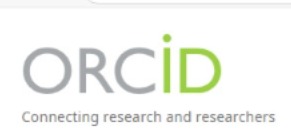Efforts To Improve The Recognition Of Hijaiyah Letters Through The Tilawati Method In Group A Children At Aba 55 Kindergarten In Semarang
DOI:
https://doi.org/10.63889/pedagogy.v18i2.304Keywords:
hijaiyah letters, Tilawati method, early childhood, ABA kindergarten, religious learningAbstract
This study aims to improve the ability to recognize hijaiyah letters in Group A children at ABA 55 Semarang Kindergarten through the application of the Tilawati method. The background of this research is the low ability of children to recognize and pronounce hijaiyah letters, which is caused by learning methods that are less interesting and not in accordance with the characteristics of early childhood development. Learning that is monotonous and less varied causes children to get bored easily and not focus on recognizing hijaiyah letters. Therefore, a more interactive, fun, and appropriate approach is needed for the child's developmental stages. This study uses the Kemmis and McTaggart model Class Action Research (PTK) approach, which is carried out in two cycles. Each cycle consists of four stages, namely planning, implementation of actions, observation, and reflection. The subjects in this study were 7 children aged 4–5 years who were members of Group A. Data collection techniques included observation, documentation, and performance assessment. The results of the study showed a significant increase in children's ability to recognize hijaiyah letters. In the initial condition (pre-action), only 28.57% of children were in the Developing According to Expectations (BSH) category. This percentage increased to 71.43% in cycle I, and reached 85.7% in cycle II. These findings prove that the Tilawati method is effectively used in improving the recognition of hijaiyah letters in early childhood, especially in the context of Islamic religious learning in kindergarten.
References
[1] Suherman, A. (2021). Early childhood Islamic education. Jakarta: Prenadamedia Group.
[2] Lestari, M., & Fauziah, N. (2020). Interactive learning strategies for early childhood. Journal of Children's Education, 9(2), 101–110. https://doi.org/10.36722/jpa.v9i2.1603.
[3] Ahmad, M. (2019). The Tilawati method in learning the Qur'an. Al-Bayan Journal: The Journal of Qur'an and Tafsir, 24(1), 55–63. https://doi.org/10.22373/albayan.v24i1.4929.
[4] Aisyah, S., Yuliati, N., & Munawaroh, L. (2020). The application of the Tilawati method in improving the ability to read hijaiyah letters in early childhood. Journal of Early Childhood Islamic Education, 5(1), 45–54.
[5] Nurhidayati, S. (2019). The effectiveness of the Tilawati method in improving the ability to read the Qur'an in early childhood at TPQ Al-Furqan. Scientific Journal of Islamic Religious Education, 11(2), 102–110.
[6] Ramadani, R., & Ma'ruf, U. (2021). The effect of the Tilawati method on the ability to recognize hijaiyah letters in children aged 5–6 years. Golden Age: A Scientific Journal of Early Childhood Growth and Development, 6(1), 12–20.
[7] Anwar, S. (2023). The concept of Islamic education in developing the personality of school-age children. Journal of Pedagogy, 16(2), 1–16. https://doi.org/10.63889/pedagogy.v16i2.173
[8] Piaget, J. (1952). The origins of intelligence in children. New York: International Universities Press.
[9] Nizar, A. (2019). The hijaiyah letter recognition strategy in early childhood is based on a multisensory approach. Journal of Children's Islamic Education, 5(2), 54–62.
[10] Fleming, N. D. (2001). Teaching and learning styles: VARK strategies. Christchurch, New Zealand: Neil Fleming.
[11] Ahmad, M. (2019). Tilawati method in learning to read the Qur'an in early childhood. Jakarta: Pustaka Al-Hikmah.
[12] Isnaini, R. (2022). The application of the Tilawati method to improve the ability to read hijaiyah letters for children aged 5-6 years. Journal of Early Childhood Education, 10(1), 23–30.
[13] Maulida, N., Hartati, S., & Wulandari, A. (2023). The influence of the Tilawati method on participation and recognition of hijaiyah letters in PAUD. Journal of Islamic Religious Education, 15(1), 77–89.
[14] Sari, D., & Maulana, F. (2021). Increase children's motivation to learn to read the Qur'an through the Tilawati method. Qur'an and Hadith Education Journal, 8(3), 112–121.
[15] Hidayat, R. (2020). The effectiveness of the Tilawati method on the ability to read hijaiyah letters in early childhood. Journal of Islamic Education, 7(2), 145–158. [15] Kemmis, S., & McTaggart, R. (1988). The action research planner (3rd ed.). Geelong, Australia: Deakin University Press.
[16] Kemmis, S., & McTaggart, R. (1988). The action research planner. Deakin University Press.
[17] Sugiyono. (2017). Educational research methods: Quantitative, qualitative, and R&D approaches (24th printing). Bandung: Alfabeta.
[18] Fleming, N. D. (2001). Teaching and learning styles: VARK strategies. Christchurch, New Zealand: Neil Fleming.
[19] Arikunto, S. (2010). Research procedure: A practical approach (Revised edition VI). Jakarta: Rineka Cipta.
[20] Creswell, J. W. (2014). Research design: Qualitative, quantitative, and mixed methods approaches (4th ed.). Thousand Oaks, CA: Sage Publications.
[21] Isnaini, R. (2022). The effectiveness of the Tilawati method in improving the ability to read hijaiyah letters in early childhood. Journal of Islamic Education, 10(2), 145-158.
[22] Maulida, N., Rahman, A., & Putri, S. (2023). The application of the Tilawati method in learning the Qur'an in early childhood education: A case study in the Central Java region. Journal of Early Childhood Education, 12(1), 67-79.
Downloads
Published
How to Cite
Issue
Section
License
Copyright (c) 2025 Rina Oktavia

This work is licensed under a Creative Commons Attribution-ShareAlike 4.0 International License.






